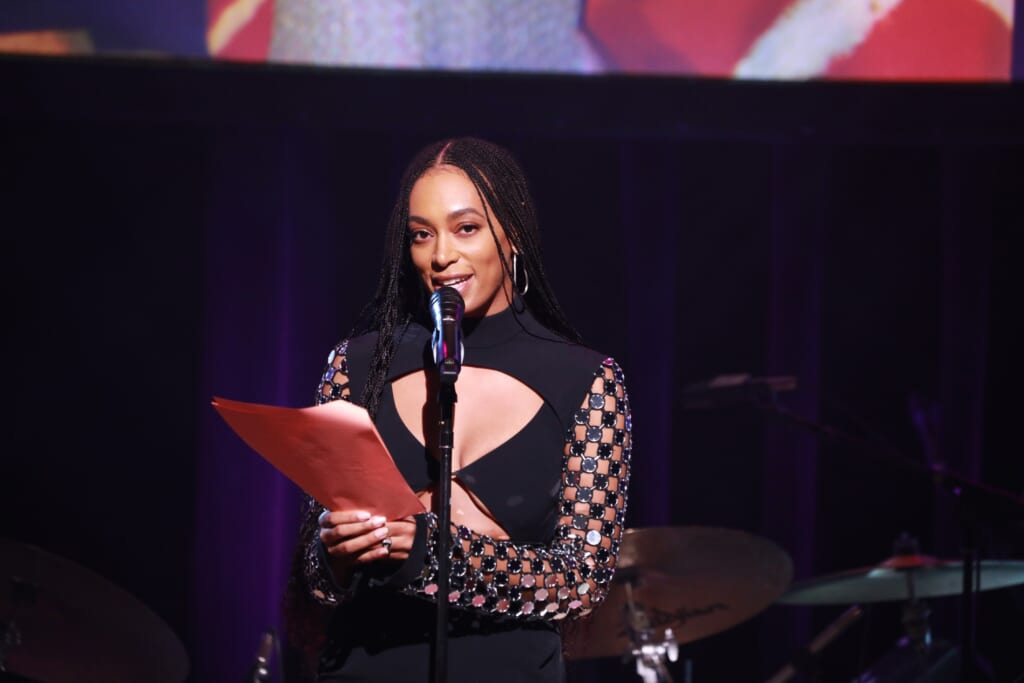Editor’s note: The following article is an op-ed, and the views expressed are the author’s own. Read more opinions on theGrio.
The David H. Koch Theater at New York’s Lincoln Center was likely full of first-time attendees on Saturday. Anticipation for the weekend midday performance had been high ever since the New York City Ballet (NYCB) announced in August that Solange was commissioned to compose music for a piece performed by the company.
Paired with choreography by Gianna Reisen for a piece called “Play Time,” this composition was Solange’s first foray into writing music for a ballet. She is the second Black woman, and third woman overall, to compose music for the NYCB. While the piece debuted at the annual Fall Fashion Gala on Thursday, Saturday was the first performance for the public.
To say that Solange and the NYCB rose to the occasion would downplay the magnitude of the event. “Play Time,” part of a multi-tier performance from several composers and choreographers, stood out as an imaginative, ambitious movement.

The placement of “Play Time” in the day’s program, between “Symphony in C” and “Love Letter (on shuffle)” was appropriate. The former, composed by Georges Bizet, was traditional ballet with textbook costuming and choreography. The latter, which featured dancers in neo-impressionistic costumes dancing to the tunes of electro-pop star James Blake, was wildly futuristic.
Solange’s imprint on the music of “Play Time” was instantly recognizable. Her style of music for the ballet was incredibly vast. Titled “Villanelle for Times,” her composition drew from the sounds of New Orleans and was riddled with tantalizing tension.
When the curtain rose for the 25-minute portion that was “Play Time,” the crowd instantly reacted to the five dancers standing stationary with their outfits covered in glitter. Each dancer was adorned with a solid color of red, orange, blue, turquoise, and lavender.
Unlike the sweeping, gliding “Symphony in C” that was rich with strings and little else, the beginning of “Play Time” drew heavily from Louisiana, with overwhelming brass, piano, and percussion. With members of Solange’s musical community joining the orchestra – trumpeter Jonathan Heim, pianist Hanna Kim, bassist Endea Owens, and drummer Jharis Yokley – the music entered emotive crevices that other ensembles could not.
The piece progressed with steady, haunting strikes from a double bass, answered by urgent strings and xylophones. The music was steeped in Blackness as the dancers sauntered, frolicked, and stalked the stage with Reisen’s contemporary choreography.
The lighting in “Play Time,” executed by Mark Stanley, played a crucial role in the success of the piece. At one point, the backdrop drew deep red and the stage lighting went out, reducing the dancers with their shining suits to faceless silhouettes.
The piano motifs, flute flourishes, snare rolls, and cymbal crashes provided an exhilarating clinic on tension building. The adjacent feelings of doom, exaltation, and celebration found a way to make all the sense in the world together.
Following “Play Time” was a solo piece performed by Anthony Huxley and the climax of “Love Letter (on shuffle).” Solange and Reisen’s collaboration proved to be a great bridge to the company dancing to the ambient electrics and skittering hi-hats of Blake’s recordings like “Radio Silence,” “(Pick Me Up) Euphoria,” and “What’s the Catch.”
“Play Time” is another example of Solange’s ambitious and tantalizing knack for making visual music. “Villanelle for Time” is a composition that gives all who perceive this ballet a glimpse into the otherworldly dimensions of the human experience.
The piece will be performed with “Symphony in C” and “Love Letters (on shuffle)” four more times in October and will return in the spring of 2023.
Matthew Allen is an entertainment writer of music and culture for theGrio. He is an award-winning music journalist, TV producer and director based in Brooklyn, NY. He’s interviewed the likes of Quincy Jones, Jill Scott, Smokey Robinson and more for publications such as Ebony, Jet, The Root, Village Voice, Wax Poetics, Revive Music, Okayplayer, and Soulhead. His video work can be seen on PBS/All Arts, Brooklyn Free Speech TV and BRIC TV.
TheGrio is FREE on your TV via Apple TV, Amazon Fire, Roku, and Android TV. Please download theGrio mobile apps today!

